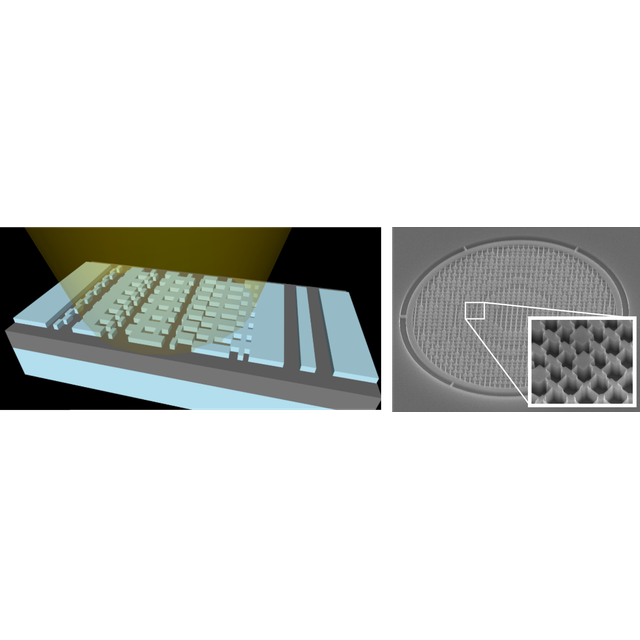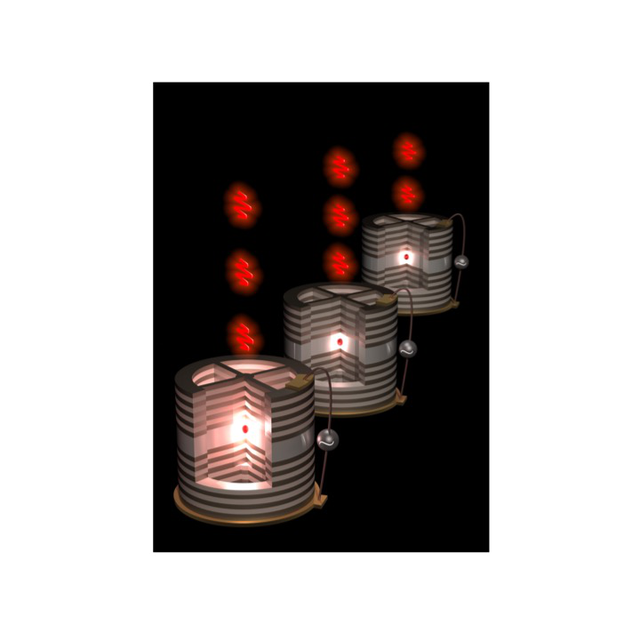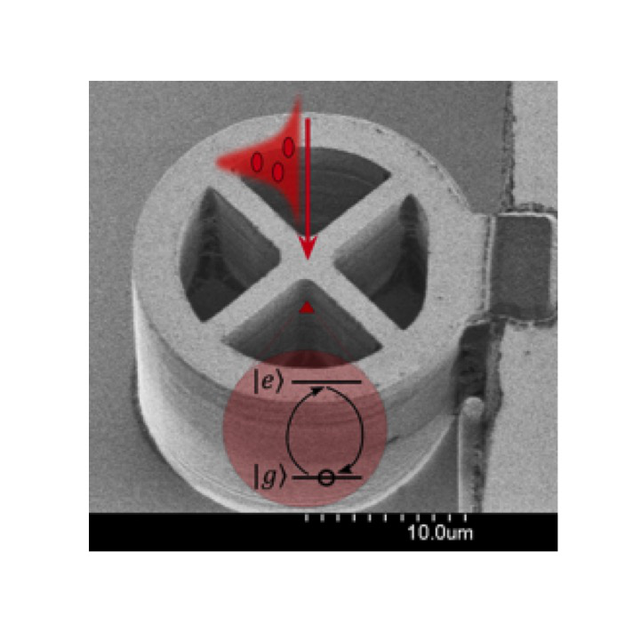Free-space laser beams are of core importance in many fast-growing technologies, including optical communications, 3D imaging and mapping, interconnects, and augmented reality. However, state-of-the-art solutions that allow to generate and control such beams typically comprise mechanical assemblies, moving parts and bulk optic components. In this scenario, the use of photonics integration to realize and combine on-chip micron-scale optical components not only offers huge potentialities for the development of compact and lightweight systems but opens the door to unique new functionalities enabled by nanotechnologies.
Here we exploit silicon nanostructuration to demonstrate two key building blocks of integrated photonic system for laser beam control. In the first work, in collaboration with National Research Council Canada and Carleton University (Canada), we exploit metamaterials to demonstrate a fundamentally new concept of a nanophotonic antenna where the far field beam is widened beyond the diffraction limit, a crucial aspect when multiple integrated antennas are integrated in large arrays. We use transversally interleaved subwavelength grating nanostructures to control the near field phase and a Bragg reflector is used at the end of the antenna to increase both the efficiency and the far field beam width. The antenna has a compact footprint of 3.1 μm × 1.75 μm and a broad far field beam width of 52° x 62°.
In the second work, partially supported by the ERC project "BEAMS" and by the RENATECH network, we exploit a flat metasurface to realize an integrated lens with a quadratic phase profile. This type of metalenses provide a point spread function that remains undistorted upon tilted illumination and can achieve a full 180° field of view. In addition, we show that the metalens has also an aromatic behavior over a bandwidth of more tha 140 nm. The combination of such metalens with arrays of nanophotonic antennas could enable the fabrication of high-performance integrated photonic system for the control of free-space laser beams, with promising applications in multispectral lidars and free-space optical communications based on wavelength division multiplexing.
Paper 1 :
Broadband behavior of quadratic metalenses with a wide field of view
Y. Liu1,2, Y. Liu1, J. Zhang1, X. L. Roux1, E. Cassan1, D. Marris-Morini1, L. Vivien1, C. Alonso-Ramos1, and D. Melati1,
Opt. Express, OE, vol. 30, no. 22, pp. 39860–39867, Oct. 2022,
doi: 10.1364/OE.466321
1 Centre de Nanosciences et de Nanotechnologies, Université Paris-Saclay, CNRS, 91120 Palaiseau, France
2 Currently with DTU Fotonik, Technical University of Denmark, (Ø)rsteds Plads 343, 2800 Kgs. Lyngby,Denmark
Paper 2 :
Highly efficient ultra-broad beam silicon nanophotonic antenna based on near-field phase engineering
S. Khajavi1, D. Melati2, P. Cheben3, J. H. Schmid3, C. A. A. Ramos2, and W. N. Ye1,
Sci Rep, vol. 12, no. 1, Art. no. 1, Nov. 2022
doi: 10.1038/s41598-022-23460-x
1 Department of Electronics, Carleton University, 1125 Colonel By Drive, Ottawa, ON, K1S 5B6, Canada
2 Centre for Nanoscience and Nanotechnologies, CNRS, Université Paris-Saclay, 10 Bv. Thomas Gobert, 91120, Palaiseau, France
3 Advanced Electronics and Photonics Research Center, National Research Council Canada, 1200 Montreal Road, Ottawa, ON, K1A 0R6, Canada
Contact : Daniele Melati
Figure caption : Integrated systems for laser beam control. (left) The developed nanophotonic antenna achieves a beam width beyond the diffraction limit through subwavelength grating nanostructures. (right) A quadratic metalens is demonstrated to symultaneously achieve an aribtrarily wide field of view and a broadband achromatic behavior over a bandwidth of more than 140 nm.








